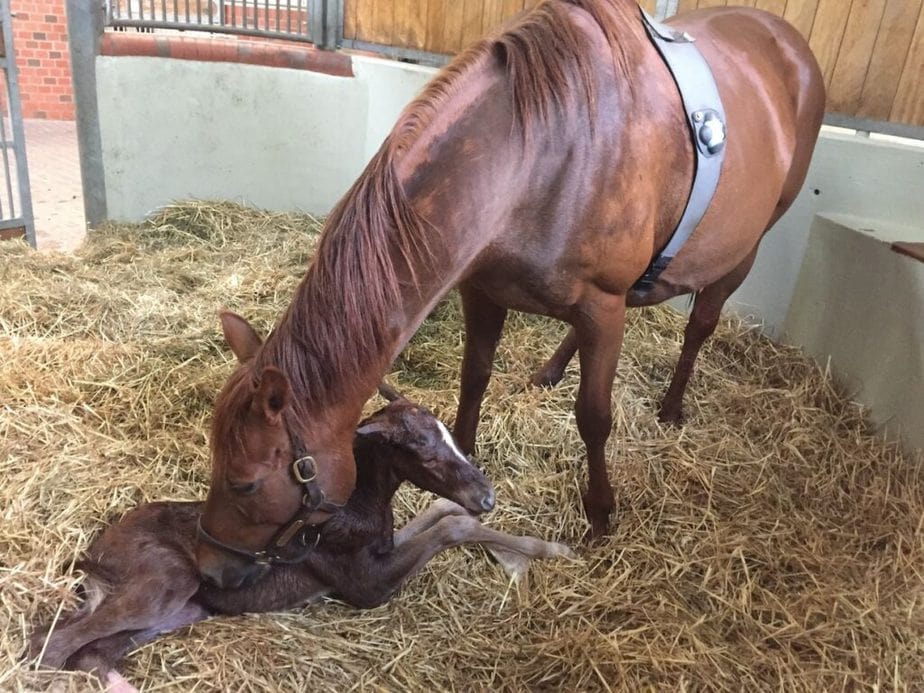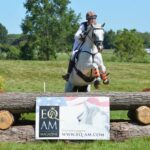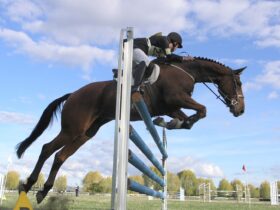Research Study Shows Promise for New Piavita Product to Automate Early Birth Detection in Horses
For background on Piavita see our previous coverage: Piavita’s Veterinary Medtech Solution Brings Equine Healthcare into the Digital Age
[ZÜRICH, SWITZERLAND, FEBRUARY 2021] — Piavita AG has partnered with the Zurich University of Applied Sciences (ZHAW) and the University of Bern with support from the Swiss Federal Fund, Innosuisse, to pursue a research study with the goal of further developing its vital sign monitoring technology—the Piavet System—to detect the onset of foaling in horses. This study—the largest known birth data collection project to date—is titled “Piabreed: Machine Learning for Automated Ovulation and Birth Monitoring in Horses.” This year, the Piabreed Project will focus on one of the two sub-projects: the industry’s need for better, less invasive, and more cost-effective monitoring of foaling mares.
“We are the middle players who combine all the partners. We provided them with the core data and the Piavet System for data collection and we are working to implement the findings into a marketable product. Together with the people from ZHAW, our goal was to figure out if there are indications for when a mare is foaling—before it begins.”
Dr. Dorina Theiss, CEO, Piavita AG
Breeding relatively untouched by technology
The breeding industry, although still relatively untouched by technology, plays a huge role in the global, 300-
billion-dollar equine industry. Today’s industry standards for birth monitoring are based on the use of
behavioral sensors to detect when the mare is sweating or laying down, or by use of an invasive vaginal
sensor. In addition, most breeders use camera systems to keep visual tabs on mares around the clock.

Study reveals exciting possibilities
The two-year funded study, which began at the beginning of the 2020 breeding season, is led by PD Dr.
Dominik Burger of the University of Bern and Agroscope. His research team includes two veterinary doctoral students from the Swiss Institute of Equine Medicine (ISME) in Avenches. In addition, Piavita partnered with machine learning expert Professor Dr. Thomas Ott of the ZHAW School of Life Sciences. He is leading the data analysis with his team in data science and computational life sciences.
“Working with vital sign data is always an interesting challenge, especially in the case of animals. Luckily, the Piavet System is a unique data source that we can exploit, showing the potential and benefits of digital veterinary medicine.”
Dr. Thomas Ott
The dedicated research team is collecting data using the Piavet System at a rate of 1,000 data points per
second. Piavita seeks to combine the user experience and studies from the data collection process with
machine learning to develop a holistic and user-friendly concept for breeders.
The Piabreed Project started at the end of 2019 and has since successfully collected a broad set of continuous vital parameters before, during, and after birth. Initial insights from 35 foaling mares raised big hopes for a highly reliable, non-invasive detection of birth, hours before the process begins. The algorithm developed from the first wave of data showed that Piabreed successfully predicted 100% of the 35 births. An early indicator like this would give breeders the value of time to take any precautionary measures needed to support the mare and foal.
US involvement
Participation from US-based vets and breeders helps further diversify the data with varied breeds and environments. The Piabreed Project is excited to welcome a new US Piabreed Partner, Performance Equine Vets of Aiken, South Carolina. Performance Equine Vets’ founder, Dr. Sabrina Jacobs, is an incredible veterinarian and reproductive specialist who keeps her practice modernized with the latest technologies.
US customers are also participating by collecting birth data on the reproductive cases they have this season. Feedback from all Piavet Users and Piabreed Partners will be taken into consideration in the further development of this new technology. The US will be Piabreed’s biggest market, and if all goes well in the current trial, Piabreed will reach the public during 2021. The American Association of Equine Practitioners (AAEP) conference, taking place in Nashville in December, will also showcase the birth monitoring solution.
A future with Piabreed
With these exciting results, the Piabreed Project team is embarking on a market trial with a select group of
breeders for the 2021 foaling season. It’s anticipated that this secondary data collection will confirm the
promising initial findings to provide breeders with a convenient, non-invasive solution for birth monitoring.
If the market trial goes as planned, Piavita plans to release Piabreed to the market later this year.
Are you active in the equine breeding industry and interested in joining us to take equine birth monitoring to
the next level? Simply email us at info@piavita.com to learn more. To follow along with the progress of this
project and to learn more about the Piavet Solution, subscribe to our blog, and follow Piavita on Instagram,
Facebook, and LinkedIn.

At Piavita, we like happy vets and healthy horses. It’s that simple. Our mission is to transform veterinary care by providing remote health monitoring technology to the veterinary industry. With a non-invasive, sensor-enabled hardware device and sophisticated software platform, the Piavet Solution automates and digitizes repetitive, manual tasks to help vets save time and improve patient outcomes. We operate in Europe and the USA, with headquarters in Zürich, Switzerland.
As an equestrian media outlet focused entirely on American horse sport, EQuine AMerica showcases the USA’s equestrian talent (both two-legged and four) in the disciplines of para dressage, dressage, hunters, jumpers, and eventing. We support and promote our nation’s fantastic equine events, products, services, artists, authors, science/tech, philanthropy, and nonprofits through our online magazine and social media platforms. Our mission is to offer you interesting/inspiring short and long-form content in a format that’s beautiful, readable, and relatable.






















SOCIAL